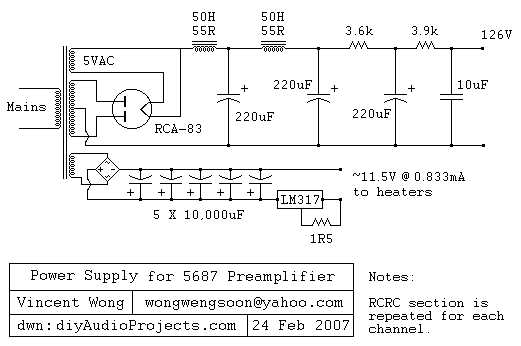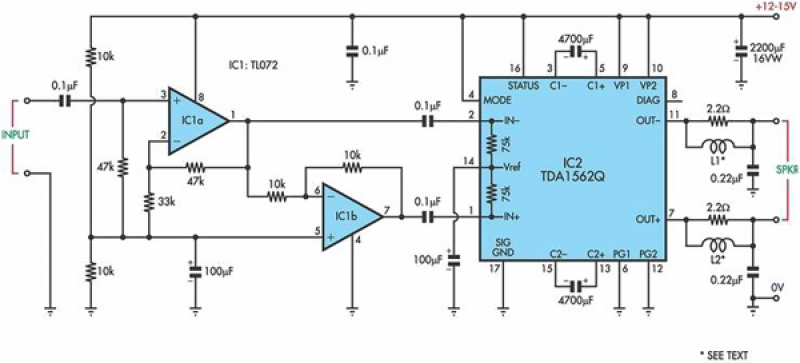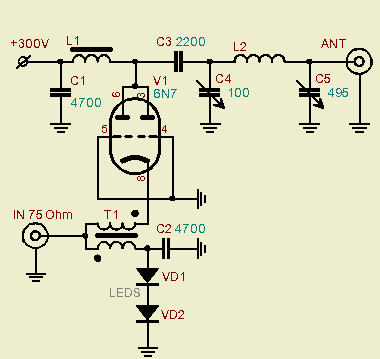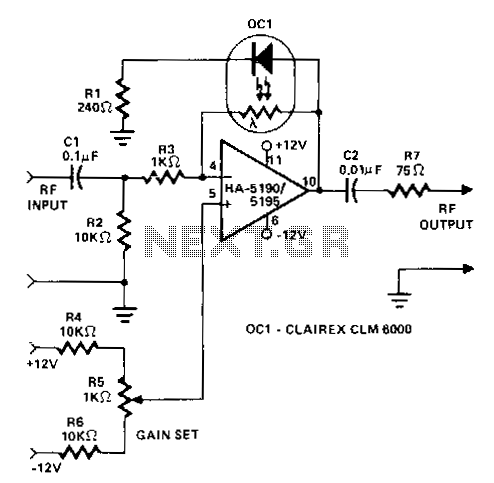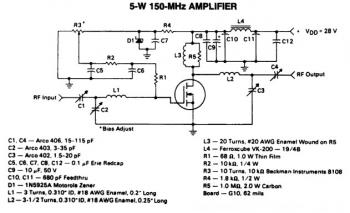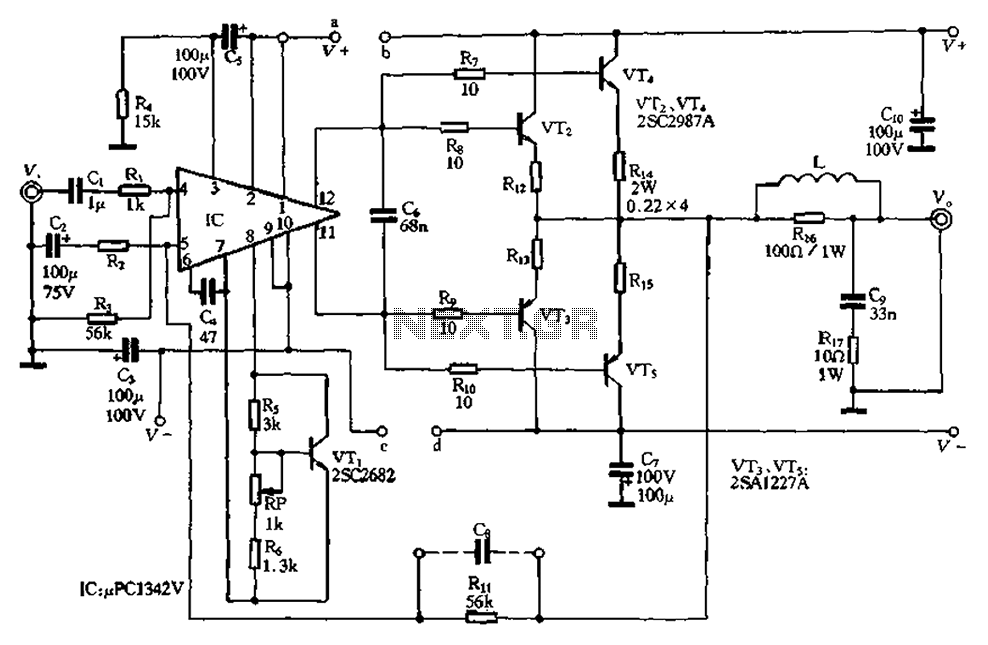
Shortwave antenna amplifier
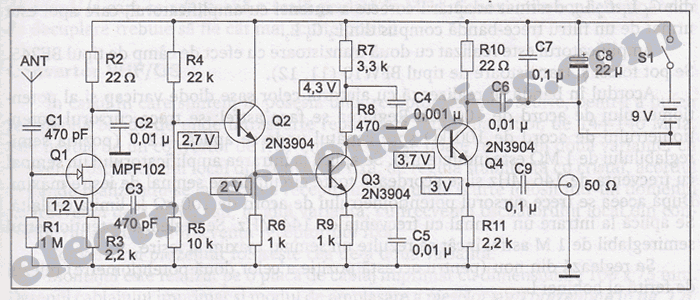
This is a wideband shortwave (SW) antenna amplifier. The frequency range spans from 1 to 30 MHz, featuring a medium gain of 15 dB. The input stage utilizes an MPF102 transistor.
The wideband shortwave antenna amplifier is designed to enhance the reception of radio signals within the frequency range of 1 to 30 MHz. This amplifier is particularly useful for improving the performance of shortwave radio systems, which often require additional gain to effectively capture weak signals.
The amplifier's input stage is constructed using the MPF102, a popular JFET (Junction Field Effect Transistor) known for its low noise characteristics and high input impedance. This choice of transistor ensures that the amplifier does not significantly load the antenna, allowing for optimal signal reception. The MPF102 is configured to operate in the common-source mode, providing voltage gain and ensuring that the amplifier maintains a low noise figure.
The overall design of the amplifier includes additional stages that may consist of further amplification and filtering to refine the output signal. The gain of 15 dB indicates a moderate level of amplification, suitable for enhancing weak signals without introducing excessive distortion or noise.
Power supply considerations are crucial for the proper functioning of the amplifier. It typically operates on a low-voltage DC supply, which can be derived from batteries or regulated power sources. Bypass capacitors are often included in the design to filter out any power supply noise that could affect performance.
In summary, the wideband shortwave antenna amplifier is a critical component for enhancing the reception capabilities of shortwave radio systems, leveraging the MPF102 transistor to achieve a balanced combination of gain and noise performance across a broad frequency range. Proper implementation of this amplifier can significantly improve the listening experience for users of shortwave radio.This is a wide band shortwave SW antenna amplifier. The frequency band is 1 to 30 MHz and a medium gain of 15 dB. The input stage is built with MPF102 and.. 🔗 External reference
The wideband shortwave antenna amplifier is designed to enhance the reception of radio signals within the frequency range of 1 to 30 MHz. This amplifier is particularly useful for improving the performance of shortwave radio systems, which often require additional gain to effectively capture weak signals.
The amplifier's input stage is constructed using the MPF102, a popular JFET (Junction Field Effect Transistor) known for its low noise characteristics and high input impedance. This choice of transistor ensures that the amplifier does not significantly load the antenna, allowing for optimal signal reception. The MPF102 is configured to operate in the common-source mode, providing voltage gain and ensuring that the amplifier maintains a low noise figure.
The overall design of the amplifier includes additional stages that may consist of further amplification and filtering to refine the output signal. The gain of 15 dB indicates a moderate level of amplification, suitable for enhancing weak signals without introducing excessive distortion or noise.
Power supply considerations are crucial for the proper functioning of the amplifier. It typically operates on a low-voltage DC supply, which can be derived from batteries or regulated power sources. Bypass capacitors are often included in the design to filter out any power supply noise that could affect performance.
In summary, the wideband shortwave antenna amplifier is a critical component for enhancing the reception capabilities of shortwave radio systems, leveraging the MPF102 transistor to achieve a balanced combination of gain and noise performance across a broad frequency range. Proper implementation of this amplifier can significantly improve the listening experience for users of shortwave radio.This is a wide band shortwave SW antenna amplifier. The frequency band is 1 to 30 MHz and a medium gain of 15 dB. The input stage is built with MPF102 and.. 🔗 External reference
